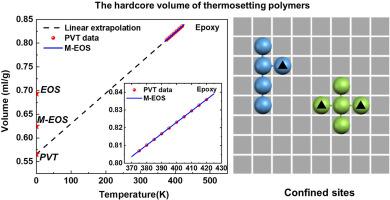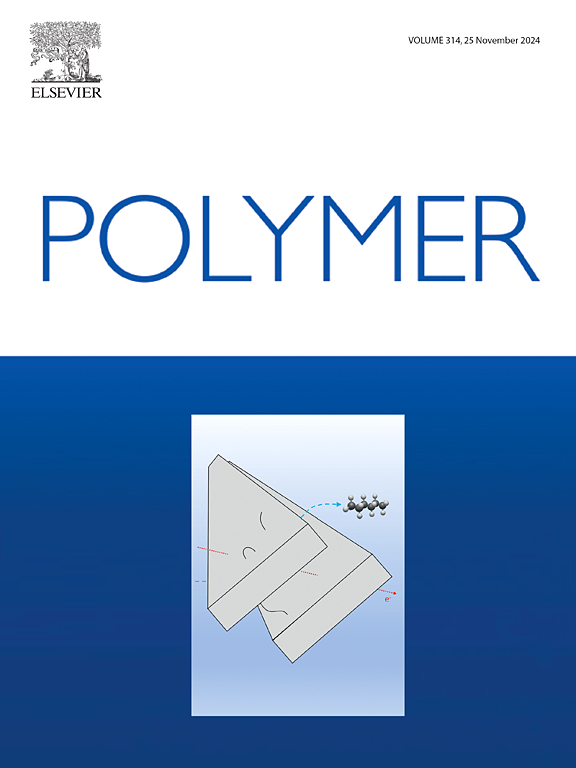Determination of the free volume of thermosetting polymers
IF 4.1
2区 化学
Q2 POLYMER SCIENCE
引用次数: 0
Abstract
Free volume is a crucial concept for discussing the mobility of chain segments and the glass transition temperature (Tg) of polymers. Despite the necessity for a convenient approach to determine the free volume of thermosetting polymers, particularly epoxy resins, a suitable method is currently absent. The classical locally correlated lattice (LCL) theory is a significant method for calculating the hardcore volume and free volume of polymers. Based on this theory, the LCL equation of state (EOS) has been employed to calculate the free volume of several thermoplastic polymers via pressure-volume-temperature (PVT) data. For thermosetting polymers, such confined sites as cross-linked points constrain the mobility of the segment, the nonbonding interactions parameter q in the EOS will influence the hardcore volume Vhc(EOS). However, the EOS rarely involves such a constraint effect, resulting in an excessive Vhc(EOS) compared with the hardcore volume Vhc(PVT) obtained via the PVT. In view of the impact of confined sites on the nonbonding interactions, herein we propose a modified EOS (M-EOS) within the framework of LCL theory and determine the molecular parameters and hardcore volume Vhc(M-EOS) of thermosetting polymers. Vhc(M-EOS) is calculated closer to Vhc(PVT) than Vhc(EOS). Since the linear polymers have no cross-linked points, Vhc(M-EOS) is underestimated by the M-EOS in comparison with Vhc(PVT) of linear polymers. Consequently, the M-EOS and EOS are suitable for calculating the hardcore volume and free volume of thermosetting polymers and linear polymers, respectively. In this sense, the present work extends the scope of the application of the LCL theory to thermosetting polymers.

求助全文
约1分钟内获得全文
求助全文
来源期刊

Polymer
化学-高分子科学
CiteScore
7.90
自引率
8.70%
发文量
959
审稿时长
32 days
期刊介绍:
Polymer is an interdisciplinary journal dedicated to publishing innovative and significant advances in Polymer Physics, Chemistry and Technology. We welcome submissions on polymer hybrids, nanocomposites, characterisation and self-assembly. Polymer also publishes work on the technological application of polymers in energy and optoelectronics.
The main scope is covered but not limited to the following core areas:
Polymer Materials
Nanocomposites and hybrid nanomaterials
Polymer blends, films, fibres, networks and porous materials
Physical Characterization
Characterisation, modelling and simulation* of molecular and materials properties in bulk, solution, and thin films
Polymer Engineering
Advanced multiscale processing methods
Polymer Synthesis, Modification and Self-assembly
Including designer polymer architectures, mechanisms and kinetics, and supramolecular polymerization
Technological Applications
Polymers for energy generation and storage
Polymer membranes for separation technology
Polymers for opto- and microelectronics.
 求助内容:
求助内容: 应助结果提醒方式:
应助结果提醒方式:


